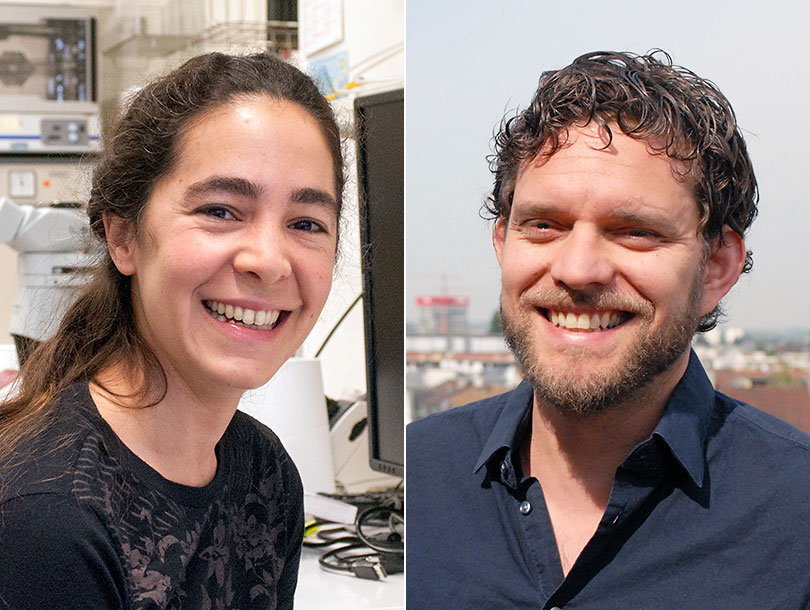A Pfizer Research Prize for Basel Researchers
Philip Tovote from the Friedrich Miescher Institute for Biomedical Research (FMI) and Maria Soledad Esposito from the Biozentrum of the University of Basel and from FMI were awarded the Pfizer Research Prize 2017. The two scientists reported in the journal Nature on how neuronal circuits are involved in the behavioral response to fear.
26 January 2017
The Pfizer Research Prize is one of the most prestigious research awards in the field of medicine in Switzerland. This year, the Pfizer Research Prize Foundation has honored 25 researchers with awards. Dr. Philip Tovote and Dr. Maria Soledad Esposito have received their award in the category “Neurological sciences and diseases of the nervous system” for their research work published in Nature. Philip Tovote works as a postdoc in the research group of Prof. Andreas Lüthi at FMI; Maria Soledad Esposito is a postdoc in Prof. Silvia Arber’s groups at the Biozentrum of the University of Basel and the FMI.
Neuronal basics of fear
In the face of existential danger, the survival of the affected person depends on the appropriate behavioral response to the particular threat – be it freezing or flight. The two researchers investigated which neuronal circuits underlie passive and active behaviors in specific threatening situations.
Applying optogenetic, electrophysiological and neuroanatomical methods in an animal model, they were able to describe the neuronal network in the fore-, mid- and hindbrain, that triggers an evolutionarily very old “freezing response” to threat. These findings provide a functional understanding of a fundamental survival reaction which is deployed by a wide variety of species, and whose dysregulation plays a role in anxiety disorders in humans.
Original article
Philip Tovote, Maria Soledad Esposito, Paolo Botta, Fabrice Chaudun, Jonathan P. Fadok, Milica Markovic, Steffen B. E. Wolff, Charu Ramakrishnan, Lief Fenno, Karl Deisseroth, Cyril Herry, Silvia Arber, Andreas Lüthi
Midbrain circuits for defensive behaviour
Nature (2016), doi:10.1038/nature17996




